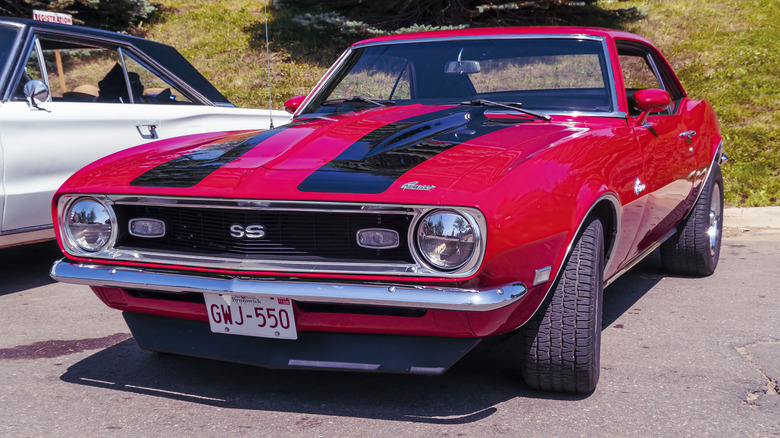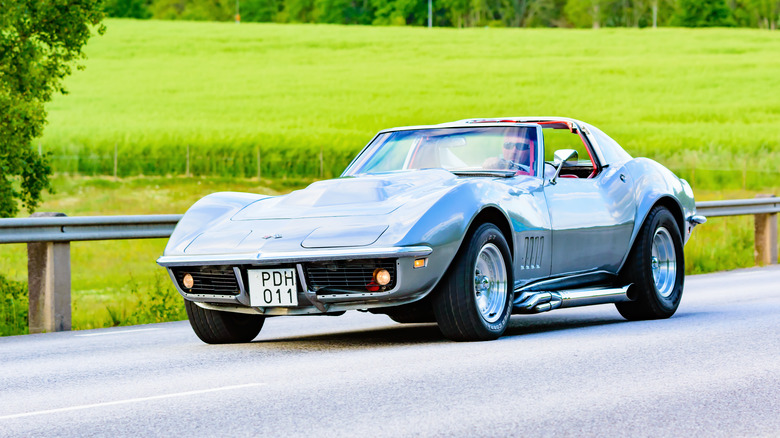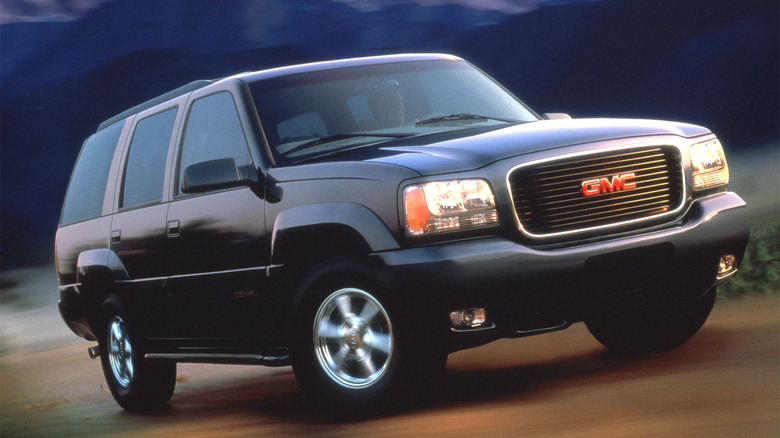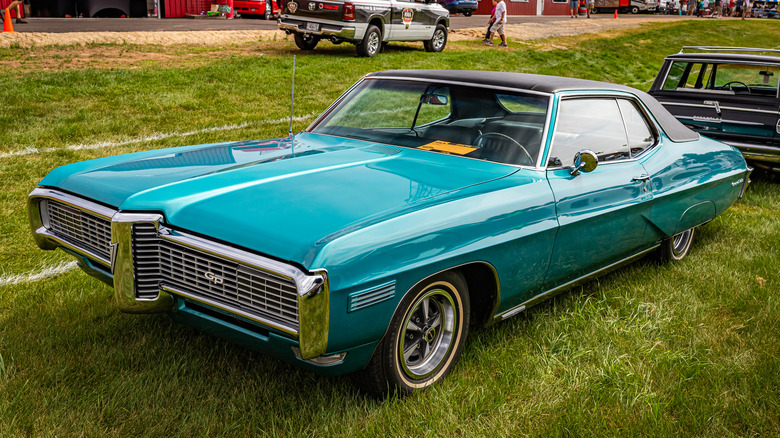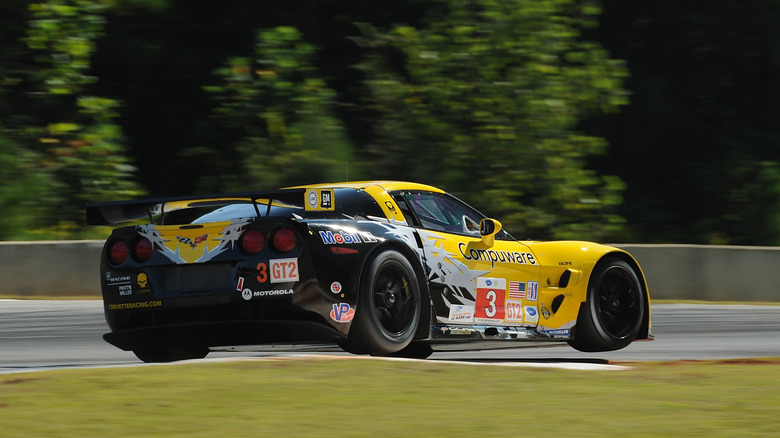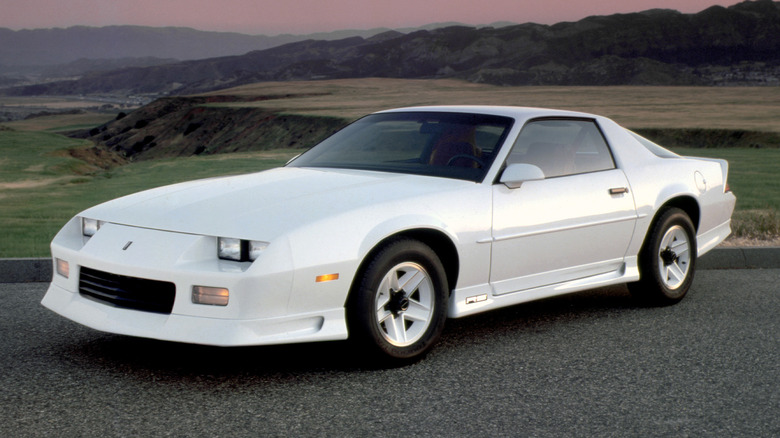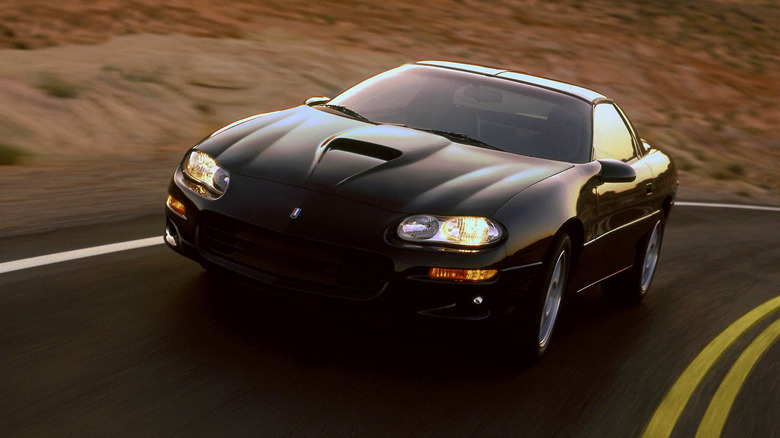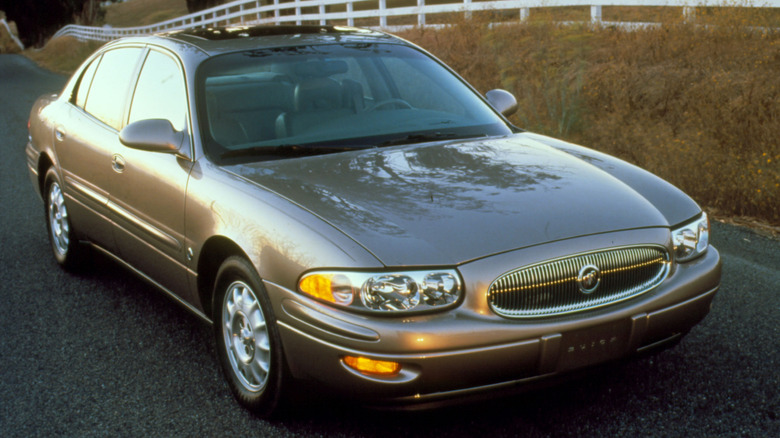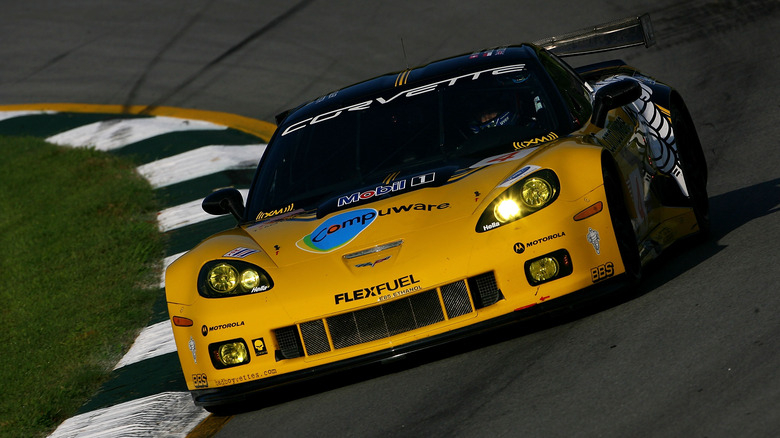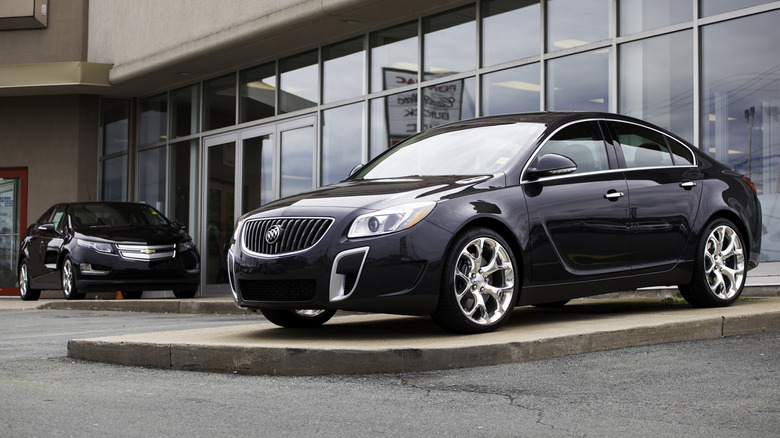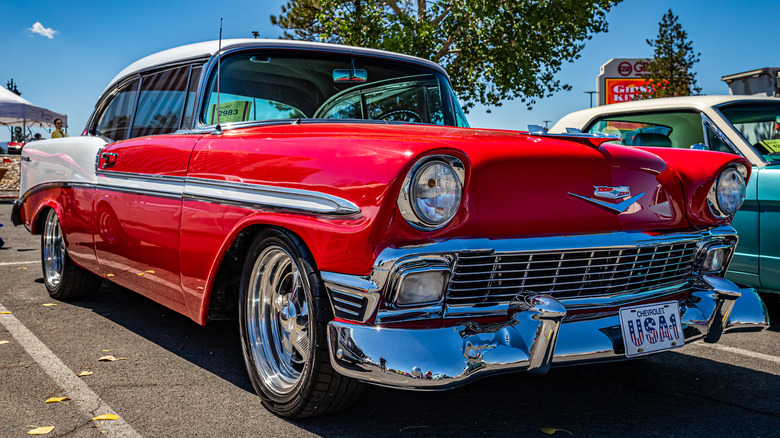The 10 Most Reliable General Motors Engines Ever Made, Ranked
General Motors is a massive car company. Currently, the automaker creates its vehicles under the GMC brand and also owns Chevrolet, Cadillac, Buick, and Lotus. Despite not getting as much fanfare as other vehicle brands, it was the highest-selling brand overall in North America in 2022. GM has always put out decent vehicles, either through its main brand or one of its subsidiaries, so it's not the biggest surprise to see them at the top of the list. Yes, you have to add all its sub-brands together, but the numbers are still there.
GM has owned a bunch of other vehicle companies in the past as well. Some of the more well-known brands include Daewoo, Geo, Hummer, Oldsmobile, Pontiac, Saab, and Saturn. Thus, there are a lot of cars and a lot of engines under GM's belt. Some of those vehicles turned out to be excellent thanks to their solid internals and their ability to adjust to the market at the time. Others, like all automakers, ended up being clunkers. One example is the Chevy Vega, a car with an all-aluminum engine that had so many faults that many of the issues were deemed unrepairable by GM.
However, GM has also made some of the most bulletproof engines ever built. After all, you have to occasionally release something good if you want to last as long as GM has. In particular, its Chevy brand has a load of excellent engines, including some of the best diesel engines we've ever seen. For this list, we'll look at more of GM's legendary engines.
10. Chevrolet 396ci L78 TurboJet
The 396 cubic inch L78 TurboJet was an important engine for Chevy. It was featured in the 1965 Sting Ray Corvette, along with full-size cars from that year, including the Impala, Bel Air, and Biscayne. The engine had a reputation for being quite reliable despite only being in a few Chevy models. At the time of its manufacture, it was the most powerful engine Chevy ever put into a Corvette. The '65 Corvette was capable of doing a 14-second quarter mile with a speed of 104 mph.
It was an engine that was built to last. The engine block was made of forged steel and fitted with high-strength alloy connecting rods. There were also aircraft-grade rod bolts that helped reinforce the bottom end. The L78 had a high-rise aluminum intake manifold to take better advantage of the free-flowing cylinder heads. All told, the engine put out 425 horsepower at 6,400 rpm and 415 pound-foot of torque at 4,000 rpm. Some independent testing says that the engine is capable of even more than that.
Chevy ultimately used the engine from 1965 through 1970. It was only ever featured in one Corvette. GM would lift a mandate from the time that allowed engines larger than 400 cubic inches to be put in non-full-sized cars, which means the Corvette got a stronger engine in 1966. However, the engine continued to be used in full-size cars in Chevy's lineup for a few more years until its eventual retirement in 1970. For the Corvette, at least, the 427 cubic-inch L36 and L72 engines replaced the 396.
9. 5.3L V8 Vortec 5300
Not every GM engine on this list is going to be from a sports car. The 5.3-liter V8 Vortec 5300 is one such engine. Chevy built this engine for many years — there are multiple stories of this engine crossing 300,000 miles and even into the 400,000- and 500,000-mile ranges. It primarily powered the Chevy Silverado during that era. While most generations of the engine were considered to be highly reliable, the fourth-generation Vortec 5300 wasn't so lucky, as it was said to have active fuel management issues that prior generations didn't have.
In terms of the engine, this was a big one. The 325 cubic inch engine featured a cast iron engine block, cast aluminum cylinder heads, and a composite material was used for the intake manifold. It was designed using data acquired during GM's racing programs, and it's said that helped result in a smooth overall engine experience. The engine also supported E85 flex fuel, beefed-up exhaust manifolds designed for quietness, and a heavy-duty timing chain for reliable operation. In other words, it was built like a tank and acted like it.
In addition to the Silverado, the engine was used in the Chevy Tahoe and Suburban, along with the GMC Yukon and Yukon XL. Many owners have reported a trouble-free life with the engine, but it did have the occasional issue. It was mostly old engine stuff like sludge build-up and spark plug issues that could be fixed with a good engine clean if the owner felt like paying for it. The 5.3-liter V8 Vortec 5300 was eventually replaced with the 5.3-liter V8 Vortec LMG, which was an identical engine except for the addition of the active fuel management system mentioned above.
8. Pontiac 428
Pontiac had some truly outstanding engines in the late 1960s. Among them were the Pontiac 400, 428, and the 455. However, we'll focus on the 428 and leave the other Pontiac V8s for another day. All three engines debuted in the 1960s and are considered highly reliable. The 428, in particular, came out of the factory rated either 375 or 390 horsepower. Customers could get a tuned engine swapped into their Pontiacs for around $650, which was quite expensive back then. The tuned and swapped engine was capable of doing 425 horsepower. Modders have successfully gotten more than 700 horsepower out of the 428.
The 400, 428, and 455 were more similar than they were different, with only minor modifications made for each engine. In general, the 428 was made of stronger steel alloys than its predecessors. It was a sturdy engine with Armasteel, a GM-branded name for pearlitic malleable cast iron. Perhaps the most interesting part of the engine assembly was how many parts you could swap between the older 400 and the newer 455. The engines had their differences, but it's not unusual for people to use parts from one engine in another.
The 428 was offered from 1967 to 1969 and was only in the Pontiac Firebird and GTO. Interestingly, it was also featured in NASCAR cars. After 1969, the 428 was replaced by the 455, which went on to have a nice run in its own right. The 400-series engines were all very reliable as long as they were maintained properly, which is true of essentially any engine.
7. Chevrolet LS9
The Chevy LS engine is known for its durability and reliability, and the LS9 is no exception. It's a 6.2-liter small-block engine originally built for the Chevy C7 Corvette ZR1. The engine also has the distinction of being handmade in the same plant as GM's racing motors. That means there are no corners cut with this one, and that's likely why it's considered to be so reliable. It's been made available as a crate engine from GM, but you'll mostly find the engine in the 2009 through 2013 Corvettes.
This is a more modern engine, which means it's made out of modern materials. The engine block is made out of aluminum, as are the cylinder heads and the intake manifold. Meanwhile, the connecting rods are made out of forged titanium. Most of the rest of the engine is forged steel or stainless steel. It's pretty easy to see why these engines are so good. Chevy really put some money into the engine materials. The engine was rated for 638 horsepower and 604 pound-foot of torque. Unlike most other engines on this list, this one only ever went into the ZR1 Corvette. It wasn't used for large truck applications like some others.
In 2014, Chevy started putting a similar but upgraded 6.2-liter LT1 V8 in the Chevy Corvette. It was also a magnificent engine, and to be honest, you could easily put that one in place of the LS9, and you'd still be right. Chevy doesn't typically skimp on its engines for its top-tier sports cars, so you know it's usually good if it's in a Corvette or a Camaro.
6. Chevy LT1 Gen II V8
Chevy's small-block V8 history is long and massive, and we'll talk more about most of them later in this article. For now, let's focus on the Gen II LT1 V8 that debuted with the 1992 Chevy Corvette. The engine was named after the LT-1, one of Chevy's original small-block V8s, and thus, it's difficult to find history about one without finding history about the other. The engine was also used in the 1993 Firebird and Camaro twins, and it went on to power full-size Chevy cars like the Caprice.
The engine was demonstrably similar to the Gen I V8 that Chevy used for years prior. According to Motortrend, the entire rotating assembly was interchangeable with the prior generation engine. Most of the upgrades came elsewhere. It used a cast iron engine block with a cast iron crankshaft. Most of the engine components were cast iron, actually. During the last few years of its run, Chevy beefed up the specs and called it the LT4, which you can find on 1996 and 1997 Chevy Corvettes.
Chevy would go on to design a new V8 for the 1998 model year, which was a large departure from the LT1. However, the LT1 was among the first new-generation American muscle car engines, and one of the things it's known for is its reliability as one of the great engines from the 1990s. Fortunately, Chevy did it right, and some of these engines still work to this day.
5. Chevrolet LS (1997 variant)
Once Chevy retired the famed LT1 engine, it released the LS engine in 1997. In a rare turn of events, the LS engine turned out to be the better engine. Chevy made this engine with various iterative updates for decades before retiring it in 2022. Somewhat ironically, the 2023 Chevy Corvette is powered by the LT2 engine — given its name, it's likely the spiritual successor to the LT1 that the LS series replaced in 1997. Sometimes automobiles can be poetic, and this is one of those times.
In any case, the LS engine has come in many forms over the years and is considered one of the best engines Chevy has done. It has a vibrant aftermarket parts ecosystem, so you can find these things modded in all sorts of different ways. The LS engines use a "Y" style block, which adds rigidity to the engine. It uses an aluminum engine block, cast aluminum pistons, powdered metal connecting rods, and aluminum cylinder heads. The liberal use of aluminum helps keep the weight down, a hallmark feature of the LS-series engines.
Beyond that, it would take all day to list every iteration made in the 25 years the engine has existed. GM has used these engines, or variants of them, in dozens of vehicles released over the years. It was one of the few engines that saw use in almost every active GM sub-brand, including Chevy, GMC, Cadillac, Pontiac, Isuzu, Saab, and Buick. There is a strong probability that a V8-powered GM product in the late '90s or the entirety of the 2000s up through 2021 had an LS engine or was derived from the LS engine.
4. Buick 3800
The Buick 3800 was one special engine. It's a six-cylinder engine that just wouldn't die. Buick used this engine in one form or another from 1988 up until 2008. Honestly, with some tweaks for emissions, it could probably still use this engine today. It was mostly used for full-size cars in the GM lineup across several sub-brands, including Buick, Pontiac, Oldsmobile, and Chevy. You won't find this one in a sports car. It wasn't that powerful of an engine.
While the Buick 3800 was a consistent fixture in GM's lineup for two decades, each generation of the engine was different. The first generation was replaced with the LN3, which improved the fuel injection system. In 1995, the Series II launched with more architectural improvements and is considered by some to be the best engine in the entire history of the engine. The final version of the engine included improved connecting rods, more aluminum, and other improvements. All versions of the engine had a cast iron engine block.
All told, the engine was capable of producing between 90 and 300 horsepower, with 145 to 280 pound-foot of torque, depending on the generation and whether or not it was turbocharged or supercharged. It was eventually replaced with another naturally aspirated V6 that was fine in its own right, but only a flawlessly executed successor was going to topple the absolutely bulletproof Buick 3800.
3. Chevrolet LS7.R
We just spent a good deal of time talking about Chevy's LS engines, but one, in particular, stood out above most of the rest — the LS7.R. It's best known for powering the Chevy Corvette C6.R specifically for competitive racing and was also included in some consumer-level Corvettes. It was an incredible 7.0-liter engine that generated 590 horsepower and 640 pound-foot of torque when tuned for racing. For consumers, the best you could get was the LS7 engine that came with the Z06 Corvette. It made 505 horsepower and 470 pound-foot of torque.
This engine is perhaps not best known for stacking miles like the other engines on this list. However, it was an excellent race engine. Chevy won the GT1 class at its debut race at the 2006 Mobil 1 Twelve Hours of Sebring event. Over the year, it took four additional trophies home, including the 24-hour Le Mans race, which is exceptionally impressive for any engine. The engine continued to win races in 2007 and continued until 2009. A friendly reminder that a detuned version of this engine was available in consumer cars.
Chevy continued to use the LS7 until around 2015, although Chevy produced it in limited quantities until 2020 as a crate engine. The engine only appeared in two consumer-level vehicles, which are the aforementioned Corvette Z06 and the Camaro Z/28. There are plenty of those still on the road, though, which shows how much of a beating these engines can really take.
2. Buick Ecotec 2.0L Turbo
It's unusual to think about a four-cylinder, turbocharged engine being reliable. There are certainly great turbo fours, but in general, more parts mean more problems, and turbocharging adds more parts. That's why it was rather surprising to see the Buick Ecotec 2.0-liter Turbo actually win an award for being a reliable engine. The engine came out in 2012 and powered many of Buick's vehicles and a few from GM's other sub-brands as well.
The engine keeps it light with its materials. It uses an aluminum engine block and cylinder head. The intake manifold is a composite material, while the exhaust manifold is stainless steel. It doesn't seem like much on paper, but Buick has a history of excellent engine construction, and its choice of materials keeps the engine both light and modern. It saw most of its use in Buick's mid-2010s cars until Buick stopped selling cars and transitioned entirely to SUVs like several other brands, including Ford.
Unlike most of the engines on this list, which harken back to the good old days, Buick still uses this engine in its cars. The Buick Envision comes with it as the stock engine. It's also used in other GM products. Essentially, any car that has the 2.0-liter turbo is likely using a variant of this engine, including the Chevy Malibu and the Cadillac ATS Sedan. Consumer Reports ranks Buick well in its list of dependable automobile brands, and this engine contributes to that. Most publications and authorities like GM's 2.0-liter Turbo as well.
1. Chevrolet small-block V8
The Chevy small-block V8 is one of the most well-known engines in existence, and people still restore and use these engines today in classic cars. There are a metric ton of these, and we pulled a few out in the list above, but several others have stood the test of time. Chevy has been using some variant of the small-block V8 for half a century at this point, and it has used it in a variety of vehicles. They're found in muscle cars, large SUVs like the Tahoe and Suburban, and even some of the company's trucks. This list is truly long.
The most recent version of the small-block V8 is in the Chevy Corvette C8, which launched in 2020 and is still being sold today. In terms of material choices, you can throw a dart and hit a type of metal used in these engines. Older versions of the engine used cast iron engine blocks, but modern ones used aluminum. Displacement ranges from 262 cubic inches to 427.8 cubic inches in the LS7. That's a little over 7 liters.
Suffice it to say, if Chevy wasn't good at building V8 engines, the company probably wouldn't exist today as GM's most successful brand. It's almost common sense at this point. You've heard songs about cars with these engines from bands like The Ramones and Prince, while the Chevy that Don McLean drove down to the levee (but it was dry) was probably powered by a Chevy small-block V8. Iconic engines almost have to be reliable; otherwise, they wouldn't be iconic.
